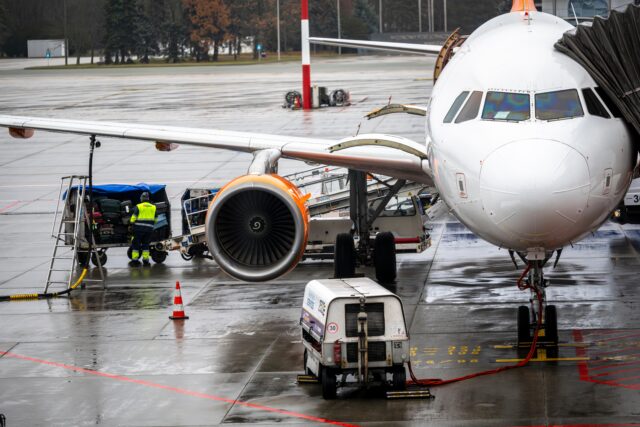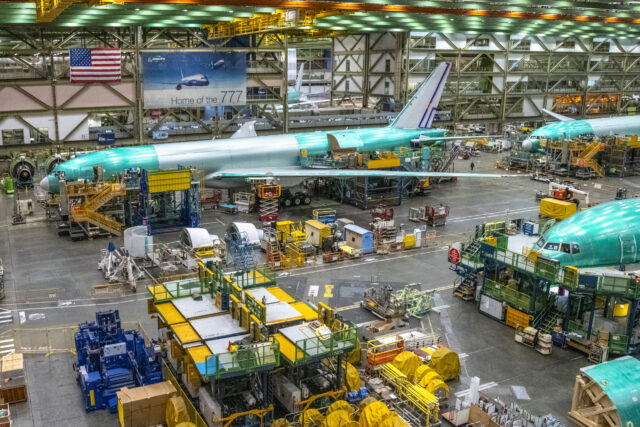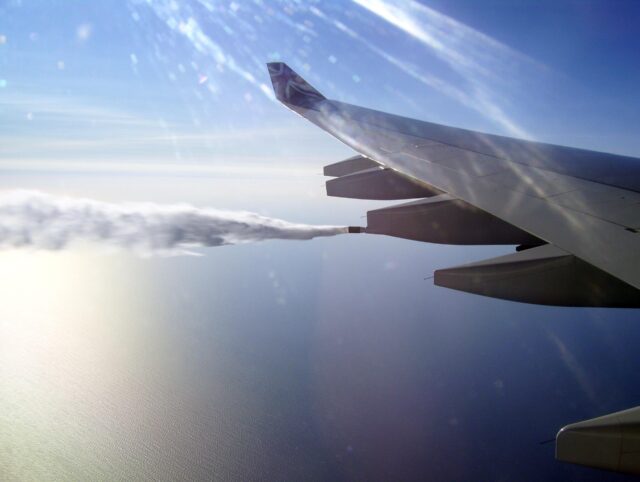Emirates is latest airline to restrict power banks on aircraft as risk of fire increases

August 8, 2025

Emirates is the latest global airline to announce restrictions on the use of lithium-ion battery power banks onboard, due to the rising risks of thermal runaway fires.
The airline shared today that, effective 1 October, passengers will need to adhere to new rules regarding the use and carriage of power banks. These are:
- Passengers can carry one power bank that does not exceed 100 watt-hours.
- Power banks cannot be used to charge devices onboard.
- Power banks cannot be charged using the aircraft’s power supply.
- The capacity rating of all power banks accepted for transportation must be available.
- Power banks must be stored in the seat pockets or under the seat in front, not in the overhead bin.
- No power banks are permitted in checked luggage (this is an existing rule).

The airline says it is taking a ‘firm and proactive’ stance to mitigate the risk of power banks onboard.
“There has been a significant growth in customers using power banks in recent years, resulting in an increasing number of lithium battery-related incidents onboard flights across the wider aviation industry,” Emirates shared.
More airlines worldwide are restricting power bank use
Emirates joins a growing list of global airlines tightening their rules on these portable chargers. These include:
- Air Busan (South Korea): Ban on storing power banks in overhead bins; must be carried on person; no in‑flight use.
- EVA Air: Full ban on using or charging power banks in-flight.
- China Airlines, Korean Air, and Asiana: Restrictions require that power banks be fully charged before coming onboard, and no in-flight use is permitted. No overhead storage.
- Thai Airways & AirAsia: Fully charged before flight; power banks banned from in-flight use.
- Singapore Airlines & Scoot: No in-flight use or charging; only allowed in cabin baggage; 100 Wh limit.
- Cathay Pacific, Hong Kong Airlines, HK Express, Greater Bay Airlines: Overhead-bin storage banned; no in-flight use; must be fully charged beforehand.
- All Nippon Airways, Japan Airlines (and other carriers in Japan through regulatory requirements): Passengers must keep power banks in sight; no overhead-bin storage; in-flight charging permitted with monitoring.
- Southwest Airlines (USA): Must keep power banks visible during use; cannot charge devices while hidden in bags in the overhead bins.

Southwest Airlines was the first airline in the US to change its policy on power banks. In May 2025, the airline introduced a rule requiring power banks to be in plain sight when in use, and forbidding hidden charging in bags or overhead bins.
Though it is less restrictive than other policies adopted by other carriers, Southwest stated this enables faster intervention if a device overheats.
What sparked the power bank restrictions?
Air Busan was the first to implement restrictions on passenger power banks following a destructive fire on one of its aircraft.
On January 28, 2025, Air Busan Flight BX391 (tail number HL7763) caught fire at Gimhae International Airport shortly before departure to Hong Kong. All 176 people on board evacuated safely, though seven sustained minor injuries.
A flight attendant noticed the blaze in an overhead luggage bin in the rear left-hand cabin, prompting a rapid evacuation while the aircraft was still at the gate. Witnesses described hearing a “crackling” sound before flames emerged.
A clear picture of the Air Busan Airbus A321-231 aircraft fuselage shows the beyond recovery damage of the hull following an empennage fire that spread to the other parts at Busan Gimhae Airport Apron of South Korea, during preparations for the departure to Hong Kong… https://t.co/mJrHSDqXDu pic.twitter.com/2cb7JUomth
— FL360aero (@fl360aero) January 28, 2025
The fire spread across nearly half of the fuselage roof before being extinguished.
South Korea’s Transport Ministry and investigators identified a faulty power bank as the probable cause.
After the incident, Air Busan required inspection of all carry-ons at boarding to keep lithium battery power banks from being stored in the overhead bins. Passengers must now keep lithium batteries on their person.
South Korea’s Ministry of Land, Infrastructure and Transport announced stricter regulations applicable nationwide from March 1, 2025.
- All power banks and e-cigarettes are banned in overhead bins and checked luggage.
- Passengers must keep these devices in seat pockets or at their feet.
- Charging of power banks via in-seat USB ports is prohibited.
- Devices must be protected against short-circuiting, either through insulation or containment in a protective pouch.
Why lithium-ion battery fires are hazardous on planes
Portable power banks are typically powered by lithium-ion or lithium-polymer batteries. If the battery is overcharged or damaged, it may result in a ‘thermal runaway.’
This is a dangerous chain reaction producing intense heat, fire, explosions, and toxic smoke emissions. Once ignited, a lithium battery can reach temperatures of over 1,000°F (538°C) within seconds. The battery will also emit toxic smoke and explosive gases, making the cabin air dangerous.
These batteries can also reignite even after initial suppression, due to latent heat or damage to adjacent cells. Typical fire extinguishers, such as Halon, do not work on these fires. A fire extinguisher may suppress flames, but it won’t cool the battery sufficiently to stop the thermal runaway reaction.
Early detection of signs of a thermal runaway event, like smoke, is delayed if the fire begins in an overhead bin.
Lithium-ion batteries used in phones have also caused fires on aircraft. In general, though, crews can respond more quickly to these incidents since passengers keep their phones nearby.
How flight crews handle thermal runaway lithium-ion battery fires
To combat the unique risks posed by lithium battery fires, airlines have trained their cabin crew on thermal runaway fire containment.
Many airlines have also added equipment onboard to manage these events when they occur.
- Lithium-ion fire containment bags (FCBs) are flame-resistant, heatproof pouches designed to contain burning devices like phones or power banks. Some include integrated cooling liners to mitigate thermal runaway.
- Battery fire extinguishers, which rely on water mist or Class D powder. Unlike Halon, these water-based agents help cool the battery and reduce reignition. Some crews are trained to use multiple extinguishers sequentially, first to knock down flames and then to prevent thermal buildup.
- Heat-resistant gloves and tongs allow cabin crew to handle and relocate smouldering devices safely into FCBs.
- Smoke hoods and personal protective equipment (PPE) protect crew members when responding in smoke-filled environments.

Despite these precautions, response time is critical. That’s why many carriers now require passengers to store power banks at their feet rather than in hard-to-access places.
FAA data shows lithium battery events on the rise
The FAA reports an alarming climb in lithium battery-related incidents aboard aircraft. In 2024, the FAA verified 85 incidents involving lithium batteries, marking a record annual high and averaging more than one incident per week.
- Over the period from 2006 through mid‑February 2025, these incidents totalled roughly 600, with about 40% linked to battery packs like power banks.
- FAA data indicates a 388% surge in lithium battery fires since 2015.
- Nearly 18% of lithium battery fire incidents result in major disruptions like emergency landings or evacuations.
- Power banks and vapes were among the devices most frequently involved in incidents tracked by the FAA.
Emirates’ new power bank rules reflect a tightening of in-flight safety measures around the world to address the increase in lithium-battery-related incidents on flights. Other airlines may follow soon.
















